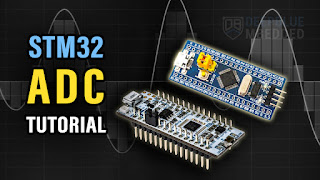What is High-Level Synthesis (HLS), and how does it differ from traditional HDL design?
High-Level Synthesis (HLS) is an advanced design methodology in digital hardware development that allows you to describe hardware functionality using high-level programming languages like C, C++, or SystemC, instead of traditional hardware description languages (HDLs) like Verilog or VHDL.
Definition of High-Level Synthesis (HLS)
HLS tools automatically generate synthesizable RTL (Register Transfer Level) code (usually in Verilog or VHDL) from high-level algorithmic descriptions. These tools optimize the design for area, speed, power, and throughput, just like a human RTL designer would.
Difference Between HLS and Traditional HDL
| Aspect | Traditional HDL (Verilog/VHDL) | HLS (C/C++/SystemC) |
|---|---|---|
| Design Level | Low-level (cycle-accurate RTL) | High-level (algorithmic/functional) |
| Language | Verilog, VHDL | C, C++, SystemC |
| Control Over Timing | Full control over clock cycles and FSM | Abstracted; compiler decides timing |
| Development Speed | Slower; manual state machine design | Faster; uses software-style coding |
| Debugging | More difficult; waveform-level | Easier; similar to debugging C/C++ |
| Reuse of Algorithms | Limited | Easy to reuse existing C/C++ code |
| Optimization Effort | Manual pipelining, unrolling, resource use | Tool-guided via pragmas/directives |
| Best For | Fine-tuned, performance-critical blocks | Quick prototyping, algorithm-heavy logic |
How HLS Works (Flow)
-
Write Algorithm: Describe functionality in C/C++ or SystemC.
-
Apply Pragmas: Guide the tool for loop unrolling, pipelining, etc.
-
HLS Tool (e.g., Vivado HLS):
-
Translates code to RTL.
-
Allows simulation and verification.
-
-
Export RTL: Resulting Verilog/VHDL is synthesized just like traditional RTL.
-
Implement in FPGA or ASIC.
Pros of HLS
-
Much faster development and iteration.
-
Easier debugging and simulation.
-
Faster time-to-market.
-
Reuse of existing software algorithms.
Cons of HLS
-
Less control over timing and resources.
-
May generate inefficient RTL if not guided properly.
-
Learning curve for writing hardware-friendly C/C++.
-
Not ideal for control-heavy designs like FSMs.
Popular HLS Tools
| Tool | Vendor | Language Support |
|---|---|---|
| Vivado HLS / Vitis HLS | Xilinx | C, C++ |
| Intel HLS Compiler | Intel (Altera) | C++ |
| Catapult HLS | Siemens (Mentor) | SystemC |
| LegUp | University of Toronto | C |
Example
C (HLS style):
Equivalent Verilog (simplified):
Summary
-
HLS allows you to design hardware using software-like languages and methods.
-
It's best for algorithm-heavy or data path-focused blocks.
-
It does not replace RTL in every case—RTL is still better for finely optimized or control-heavy logic.




评论
发表评论